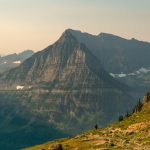Unveiling The True Essence Of Nature Trekking: Discover The Meaning And Take Action Now
Nature Trekking Meaning: Exploring the Beauty of the Outdoors
Introduction
Have you ever felt the urge to escape the hustle and bustle of city life? To leave behind the noise, pollution, and stress, and immerse yourself in the tranquility of nature? If so, then nature trekking might just be the perfect activity for you. Nature trekking, also known as hiking or backpacking, is a recreational activity that involves walking in natural environments, usually in the countryside or wilderness.
3 Picture Gallery: Unveiling The True Essence Of Nature Trekking: Discover The Meaning And Take Action Now




Image Source: wikimedia.org
For many, nature trekking is more than just a physical activity; it is a way to connect with nature, to challenge oneself, and to find inner peace. In this article, we will delve into the meaning and significance of nature trekking, its benefits, and how you can get started on your own adventure.
What is Nature Trekking?
Nature trekking refers to the activity of exploring natural environments on foot, often for multiple days and covering long distances. Unlike a simple walk in the park, nature trekking involves venturing into remote and untouched areas, away from civilization. It is a way to experience the raw beauty of nature, from towering mountains and dense forests to serene lakes and winding rivers.
Who Can Participate in Nature Trekking?

Image Source: muchbetteradventures.com
Nature trekking is a versatile activity that can be enjoyed by people of all ages and fitness levels. Whether you are a seasoned hiker or a beginner, there is a trekking route suitable for you. It is important, however, to choose a trekking route that matches your physical capabilities and level of experience. For beginners, it is advisable to start with shorter and less challenging treks, gradually building up your stamina and skills.
When and Where to Go Nature Trekking?

Image Source: adventures.com
The best time to go nature trekking depends on the location and the season. Different destinations have different peak trekking seasons, which are usually determined by weather conditions and natural phenomena. For example, spring and autumn are popular seasons for trekking in the Himalayas, while summer is ideal for exploring the mountains of Europe.
As for the best trekking destinations, the possibilities are endless. From the majestic peaks of the Himalayas to the lush forests of the Amazon, there are countless places around the world that offer breathtaking trekking experiences. Some popular trekking destinations include the Inca Trail in Peru, the Appalachian Trail in the United States, and the Everest Base Camp trek in Nepal.
Why Should You Go Nature Trekking?
There are numerous reasons why nature trekking is a worthwhile activity. First and foremost, it allows you to escape the monotony of everyday life and immerse yourself in the beauty of nature. Trekking provides a sense of freedom and adventure, as you explore new landscapes and push your limits.
In addition to the physical benefits, nature trekking also has a positive impact on mental and emotional well-being. Spending time in nature has been proven to reduce stress, improve mood, and increase overall happiness. It provides an opportunity for self-reflection and introspection, away from the distractions of modern life.
How to Prepare for a Nature Trekking Trip?
Proper preparation is essential for a successful and enjoyable nature trekking trip. Here are some important tips to keep in mind:
1. Research the Route:
Before embarking on a trek, it is crucial to research the route thoroughly. Familiarize yourself with the terrain, weather conditions, and any potential risks or challenges. This will help you pack the necessary gear and make informed decisions during the trek.
2. Pack Light, Pack Right:
When it comes to trekking, less is more. Pack only the essentials, such as food, water, a first aid kit, appropriate clothing, and camping gear. Keep in mind that you will be carrying your backpack for long distances, so it is important to pack light.
3. Stay Hydrated and Nourished:
Hydration and nutrition are key during a trekking trip. Make sure to carry an adequate supply of water and energy-rich snacks to keep you fueled throughout the journey. It is also important to drink water regularly and eat balanced meals to maintain your energy levels.
4. Wear Appropriate Clothing and Footwear:
Dressing appropriately for trekking is essential. Choose lightweight, breathable clothing that will keep you comfortable in different weather conditions. Invest in a good pair of trekking shoes that provide proper ankle support and traction.
5. Follow Leave No Trace Principles:
When trekking in nature, it is crucial to minimize your impact on the environment. Follow the principles of Leave No Trace, which include disposing of waste properly, staying on designated trails, and respecting wildlife and local communities.
FAQ about Nature Trekking
Q: Is trekking the same as hiking?
A: While the terms trekking and hiking are often used interchangeably, there is a slight difference between the two. Trekking usually involves longer distances and multiple days of walking, often in remote areas. Hiking, on the other hand, refers to shorter walks, usually done as a day trip.
Q: Do I need to be physically fit to go nature trekking?
A: While a certain level of fitness is beneficial for nature trekking, you don’t need to be an athlete to enjoy this activity. Start with easier treks and gradually increase the difficulty as your fitness improves. It is always a good idea to consult with a healthcare professional before undertaking any strenuous physical activity.
Q: What equipment do I need for nature trekking?
A: The essential equipment for nature trekking includes a sturdy backpack, trekking shoes, appropriate clothing, a sleeping bag, a tent, a cooking stove, a map and compass, a headlamp, a water bottle, and a first aid kit. It is important to invest in high-quality gear that is suitable for the conditions you will encounter during your trek.
Q: Are guided trekking tours recommended?
A: Guided trekking tours can be a great option, especially for beginners or those unfamiliar with the area. A knowledgeable guide can provide valuable information about the environment, ensure your safety, and enhance your overall trekking experience. However, if you prefer a more independent and adventurous experience, self-guided treks are also a popular choice.
Conclusion
Nature trekking is an incredible way to explore the beauty of the outdoors, challenge yourself physically and mentally, and find solace in nature’s embrace. Whether you are a seasoned trekker or a beginner, there is a trekking route out there waiting for you to discover. So lace up your boots, pack your backpack, and embark on a journey of a lifetime. Nature awaits!
This post topic: Hiking

